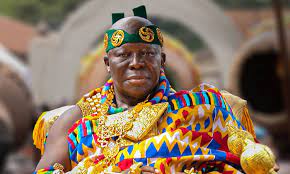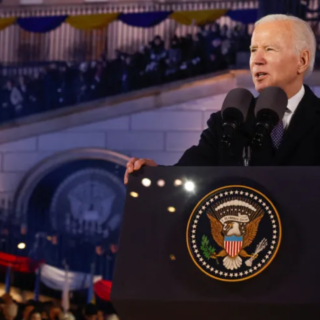
The recent exchange between the Asantehene, Otumfuo Osei Tutu II, and the Dormaa chief, Oseadeayo Agyeman Badu II, revolves around the powers and status of the Asantehene, who is the traditional leader of the Ashanti people in Ghana, and his role in elevating chiefs to the status of paramountcy.
Otumfuo Osei Tutu II, during an Asanteman Council meeting at the Manhyia Palace in Kumasi, reiterated the historical context of how the Dormaa stool was elevated to the status of a paramount chief by a previous Asantehene. He emphasized the importance of historical accuracy and the role of the Asantehene in conferring paramountcy status on certain chiefs.
The Dormaa chief, Oseadeayo Agyeman Badu II, had expressed concerns in a video interview with Ghanaweb about the Asantehene’s ability to elevate chiefs to paramount status, and he also questioned the title of “King” in Ghana. He argued that the 1992 constitution of Ghana does not recognize the existence of a Kingdom within Ghana, making it inappropriate to refer to the Asantehene as a King. He suggested that the mention of the Asantehene in the Chieftaincy Act should be removed, and he indicated his intention to lead a campaign to make this amendment.
This disagreement appears to be rooted in historical and constitutional interpretations of the roles and titles of traditional leaders in Ghana. The Asantehene, as the leader of the Ashanti people, holds a significant position in Ashanti culture and history, while the Dormaa chief questions the use of the title “King” and the legal recognition of such titles in the Ghanaian constitution.
It’s important to note that the dispute between these two traditional leaders is part of a broader discussion about the roles and powers of traditional chiefs and kings in Ghana and the legal framework that governs their status and authority.
The recent exchange between the Asantehene, Otumfuo Osei Tutu II, and the Dormaa chief, Oseadeayo Agyeman Badu II, revolves around the powers and status of the Asantehene, who is the traditional leader of the Ashanti people in Ghana, and his role in elevating chiefs to the status of paramountcy.
Otumfuo Osei Tutu II, during an Asanteman Council meeting at the Manhyia Palace in Kumasi, reiterated the historical context of how the Dormaa stool was elevated to the status of a paramount chief by a previous Asantehene. He emphasized the importance of historical accuracy and the role of the Asantehene in conferring paramountcy status on certain chiefs.
The Dormaa chief, Oseadeayo Agyeman Badu II, had expressed concerns in a video interview with Ghanaweb about the Asantehene’s ability to elevate chiefs to paramount status, and he also questioned the title of “King” in Ghana. He argued that the 1992 constitution of Ghana does not recognize the existence of a Kingdom within Ghana, making it inappropriate to refer to the Asantehene as a King. He suggested that the mention of the Asantehene in the Chieftaincy Act should be removed, and he indicated his intention to lead a campaign to make this amendment.
This disagreement appears to be rooted in historical and constitutional interpretations of the roles and titles of traditional leaders in Ghana. The Asantehene, as the leader of the Ashanti people, holds a significant position in Ashanti culture and history, while the Dormaa chief questions the use of the title “King” and the legal recognition of such titles in the Ghanaian constitution.
It’s important to note that the dispute between these two traditional leaders is part of a broader discussion about the roles and powers of traditional chiefs and kings in Ghana and the legal framework that governs their status and authority.
Source: Omanghana.com




